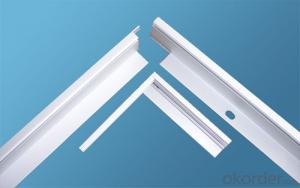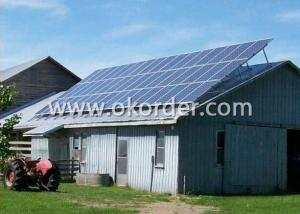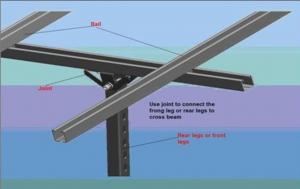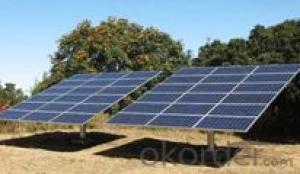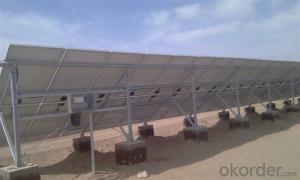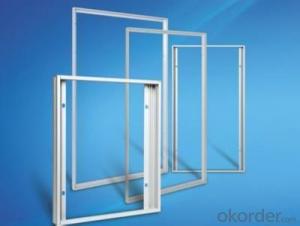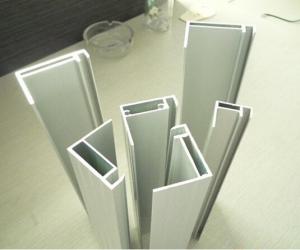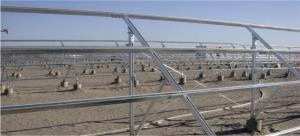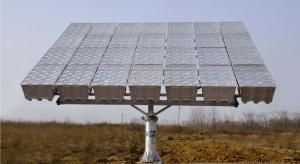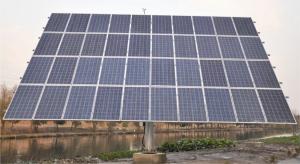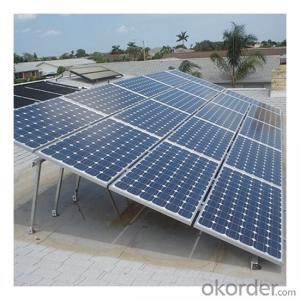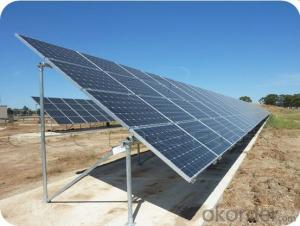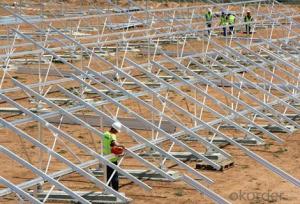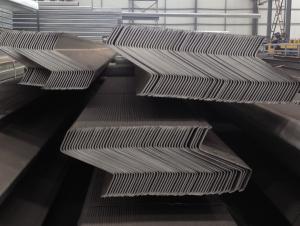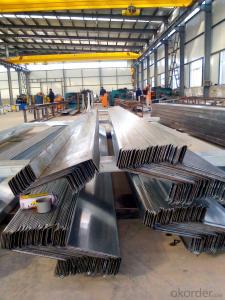Aluminum Frame for solar panels
- Loading Port:
- China Main Port
- Payment Terms:
- TT OR LC
- Min Order Qty:
- -
- Supply Capability:
- -
OKorder Service Pledge
OKorder Financial Service
You Might Also Like
Specifications
1.Aluminium profiles 6000 series
2.ISO9001,14001,EN,SASO, etc
3.Manufacture,Competitive price,high quality.
4.Max size:350mm
PRODUCTION CAPACITY: 60,000 TONS PER YEAR
CERFICATE: ISO9001 ISO14001 EN SASO, etc
ALUMINIUM PROFILE SURFACE TREATMENT:
1.MILL FINISH
2.ANODIZING
3.SANDING BLASTING
4.POWDER COATING
5.ELECTROPHORESIS
6.WOODEN GRAIN
7.THERMAL BREAK PROFILES
PRESS MACHINE: 630 tons to 2500 tons
MINIMUM QUANTITY: 1 TON
PACKING:HEATED SHRINK FILM OR Wrapping paper
FOB PORT: SHANGHAI
PAYMENT WAY:T/T or L/C
TEMPER: T5,T6,etc.
ALLOY:6063,6061,6060,6082,etc.
QUALITY STANDARD:GB/T 5237.1-2008
- Q:Are there any specific requirements for installing a solar mounting system on a green roof?
- Yes, there are specific requirements for installing a solar mounting system on a green roof. Firstly, the green roof should be able to support the additional weight of the solar panels and their mounting system. The structural integrity of the roof must be assessed by a professional engineer to ensure it can handle the load. Additionally, the green roof should have a suitable slope and orientation to maximize solar exposure. Proper waterproofing and drainage systems are crucial to prevent water leakage and damage to the roof. It is essential to consult with experts in both green roof and solar panel installation to ensure compliance with building codes and regulations.
- Q:Can a solar mounting system be used for solar charging stations or EV charging infrastructure?
- Yes, a solar mounting system can definitely be used for solar charging stations or EV charging infrastructure. The mounting system provides the necessary support and stability for solar panels, allowing them to efficiently collect sunlight and convert it into electricity for charging electric vehicles or powering charging stations.
- Q:Can a solar mounting system be used with solar-powered environmental monitoring systems?
- Yes, a solar mounting system can be used with solar-powered environmental monitoring systems. Solar mounting systems are designed to support and secure solar panels, which generate electricity from the sun. Solar-powered environmental monitoring systems utilize solar panels to power various sensors and equipment for monitoring environmental conditions. By using a solar mounting system, the solar panels can be properly positioned and installed to maximize sunlight exposure, ensuring efficient power generation for the monitoring systems.
- Q:Can a solar mounting system be used with micro-inverters?
- Yes, a solar mounting system can be used with micro-inverters. In fact, micro-inverters are often preferred in residential solar installations as they allow for individual panel optimization and increased energy production. The solar mounting system simply needs to be compatible with the micro-inverter technology and designed to accommodate the additional wiring and connections.
- Q:Are there any specific requirements for installing a solar mounting system on a tile roof?
- Yes, there are specific requirements for installing a solar mounting system on a tile roof. The mounting system needs to be designed to accommodate the weight of the solar panels and be compatible with the tile roof structure. Additionally, proper flashing and sealing techniques must be used to ensure a watertight installation and prevent any damage to the roof. It is recommended to consult with a professional solar installer who can assess the specific requirements of your tile roof and ensure a safe and efficient installation.
- Q:How does a solar mounting system affect the efficiency of solar panels?
- A solar mounting system plays a crucial role in determining the efficiency of solar panels. It ensures proper installation and placement of solar panels, maximizing their exposure to sunlight. By securely fastening the panels in an optimum orientation and angle, the mounting system helps in capturing the maximum amount of sunlight, leading to increased energy generation. Additionally, it helps in minimizing shading and reducing the risk of damage from wind, snow, or other environmental factors, ultimately enhancing the overall efficiency and performance of the solar panels.
- Q:Are there any specific requirements for spacing between solar panels when using a mounting system?
- Yes, there are specific requirements for spacing between solar panels when using a mounting system. The spacing between panels should allow for proper airflow and prevent shading, which can decrease the overall efficiency of the system. The recommended spacing is typically between 6 to 12 inches, depending on factors such as the panel's size, orientation, and the mounting system being used.
- Q:Can a solar mounting system be installed on a rooftop with a cedar shingle roof?
- Yes, a solar mounting system can be installed on a rooftop with a cedar shingle roof. The shingle roof provides a stable and solid surface for the mounting system to be securely attached. However, it is important to consult with a professional installer to ensure the system is properly designed and installed to avoid any damage to the roof or compromising its integrity.
- Q:Can a solar mounting system be installed on a remote or off-grid location?
- Yes, a solar mounting system can be installed on a remote or off-grid location. In fact, off-grid locations are often ideal for solar installations as they provide access to ample sunlight without the need for grid connection. By utilizing batteries or other energy storage methods, the solar system can provide reliable power even in remote areas without access to traditional utility infrastructure.
- Q:Can a solar mounting system be tilted to optimize the angle of the panels?
- Yes, a solar mounting system can be tilted to optimize the angle of the panels. This adjustment allows for better exposure to sunlight, maximizing the energy output of the solar panels.
1. Manufacturer Overview |
|
|---|---|
| Location | |
| Year Established | |
| Annual Output Value | |
| Main Markets | |
| Company Certifications | |
2. Manufacturer Certificates |
|
|---|---|
| a) Certification Name | |
| Range | |
| Reference | |
| Validity Period | |
3. Manufacturer Capability |
|
|---|---|
| a)Trade Capacity | |
| Nearest Port | |
| Export Percentage | |
| No.of Employees in Trade Department | |
| Language Spoken: | |
| b)Factory Information | |
| Factory Size: | |
| No. of Production Lines | |
| Contract Manufacturing | |
| Product Price Range | |
Send your message to us
Aluminum Frame for solar panels
- Loading Port:
- China Main Port
- Payment Terms:
- TT OR LC
- Min Order Qty:
- -
- Supply Capability:
- -
OKorder Service Pledge
OKorder Financial Service
Similar products
New products
Hot products
Hot Searches
Related keywords
